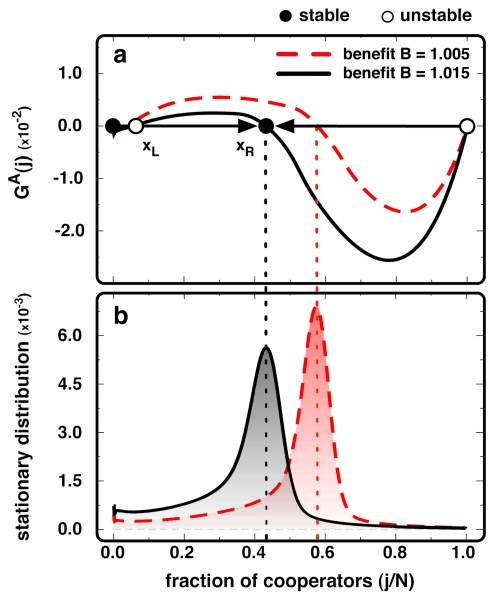Figure 1. Time-independent AGoS.
(a) We plot GA(j) for a population of players interacting via a PD in a homogeneous random network, for two values of the benefit B. Globally, GA(j) indicates that the population evolves towards a co-existence scenario. (b) Stationary distributions showing the pervasiveness of each fraction j/N in time. In line with the AGoS in a), the population spends most of the time in the vicinity of the stable-like root xR of GA(j). When j/N≈0, Cs become disadvantageous, giving rise to an unstable-like root xL of GA(j) which, however, plays a minor role as shown (N = 103, <k> = 4 and β = 1.0). Homogeneous random networks were obtained by repeatedly swapping the ends of pairs of randomly chosen links of a regular lattice [54].

